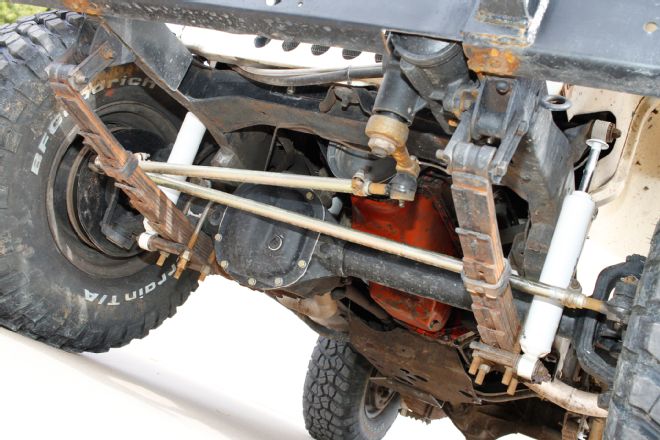
Does your early Jeep shimmy, wander, or shake? This article may interest you. The factory steering on the early CJ-5 uses a gear assembly with a rotating arm that mounts to the inside of the driver side framerail near the transmission bellhousing. From there, a connecting rod travels forward to connect to a frame-mounted bellcrank that translates the steering linkage to 90 degrees. Attached to the other end of the bellcrank are left- and right-side tie rods that connect to their respective steering knuckles on the front axle.
With this style of steering, the extra linkage and moving joints add up to wasted energy and potential wear points that lead to loose steering and road wander. The setup can be improved upon with the upgrade to a common Saginaw recirculating-ball power steering box and simpler linkages. Lamb Fab in Gilbert, Arizona, walked us through a conversion they were doing on a ’62 CJ-5.
The factory steering column needed to be modified, and in this case, the column was replaced with an aftermarket tilt column to offer a more comfortable steering wheel position in the smallish Jeep cab. The original steering box and all the linkage were completely removed. Frame reinforcement plates were welded to the framerail, and a Saginaw power steering box was used with a T-style draglink/tie rod configuration.
Along with the steering upgrade, a Dana 30 front axle was installed. The original closed-knuckle drum-brake Dana 27 axle was tossed to make room for an open-knuckle disc-brake Dana 30 from a post ’76 CJ-5. This has several advantages: the greater reliability of the open-knuckle design, reduced turning radius, improved braking, 27-spline axleshafts (versus the older coarse, 10-spline versions), and larger axletubes.
The conversion is largely bolt-on except for some welding that needs to be done at the base of the steering column and for the steering box mounts at the framerail. However, the project is well worth the effort to gain the improvement in steering stability and brake performance, especially if you have swapped to larger tires. The end result shown here looks a bit dirty as the owner, Frank Gray, took off wheeling in the Jeep before we could get final photos. We can definitely say that the new steering in the old Jeep is a big improvement.
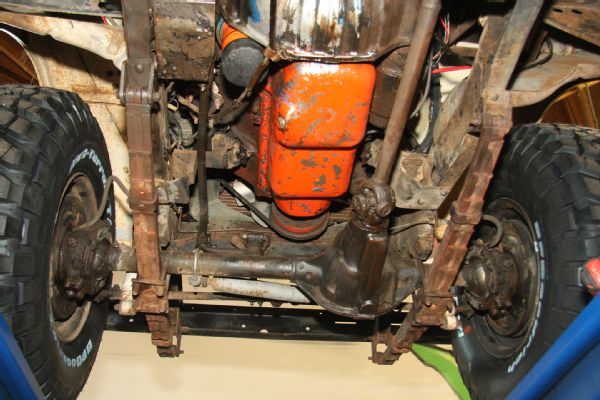
Here's a snail's-eye view of the original CJ-5 front axle and steering system. The steering box sits above a small skidplate to the side of the engine bellhousing. The closed-knuckle Dana 27 axles with cardan U-joints were used from 1961 to 1971 in many Jeep CJ-5 and CJ-6 models.
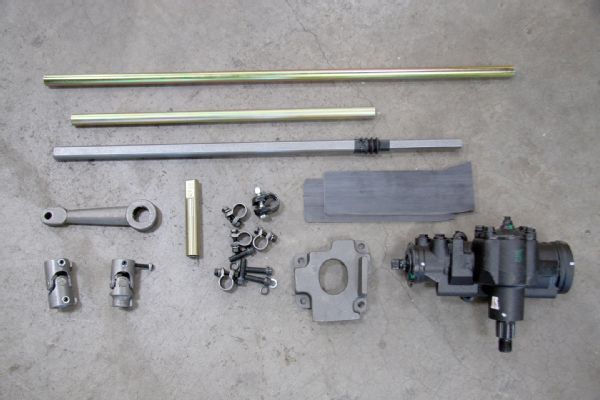
Some of the steering conversion parts were sourced from Advance Adapters, including frame reinforcement plates, steering box mount, pitman arm, Borgeson steering shaft components, and steering rods. The Saginaw power steering box is a ’70s GM fullsize car box.
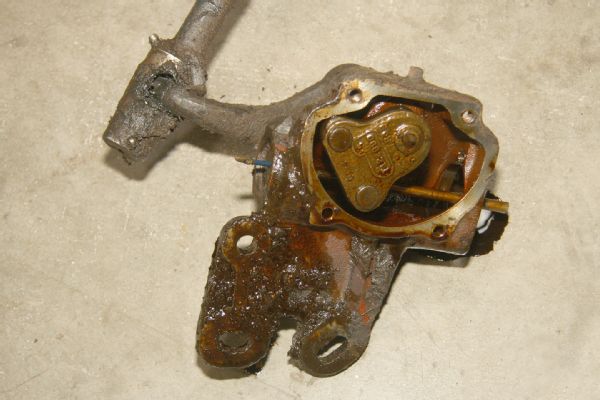
Here's the factory manual steering box. It's a Ross worm/sector unit. As with most steering systems, the one in this CJ-5 worked decent when brand new, but add the effects of aging and the addition of larger tires, and the steering stability is not what it used to be. Also, removing this steering box provides greater room for exhaust routing, engine swaps, and steering column swaps.
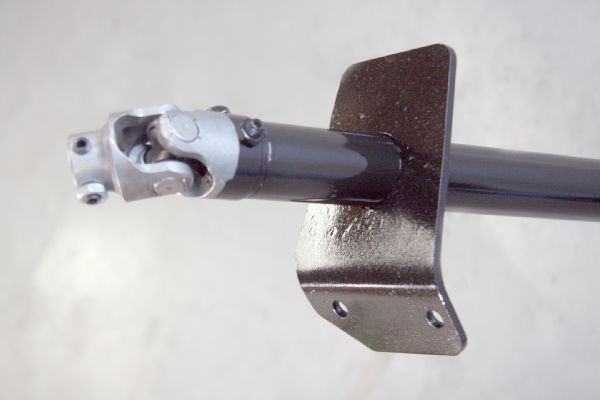
The factory steering column can be retained and the base bolted to the firewall using a plate from the Advance Adapters kit. This is the most straight-forward column adaptation, and Borgeson U-joints are used in the new steering shaft assembly.
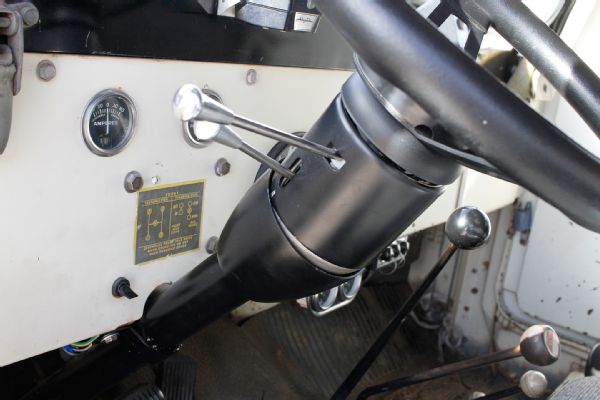
The factory steering column can be retained and the base bolted to the firewall using a plate from the Advance Adapters kit. This is the most straight-forward column adaptation, and Borgeson U-joints are used in the new steering shaft assembly.
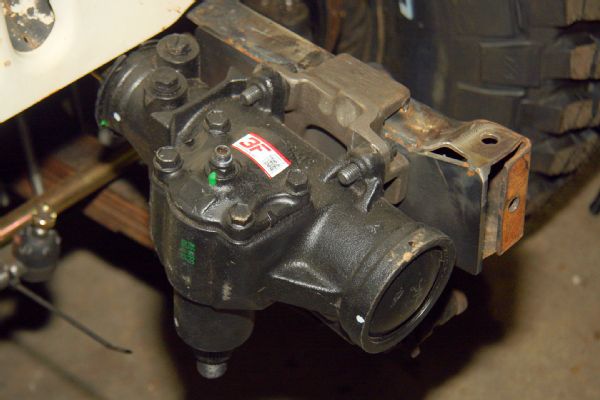
Here's the Saginaw power steering box set in place using the mounting plate from Advance Adapters. Frame reinforcement plates were added to each side of the frame as well.
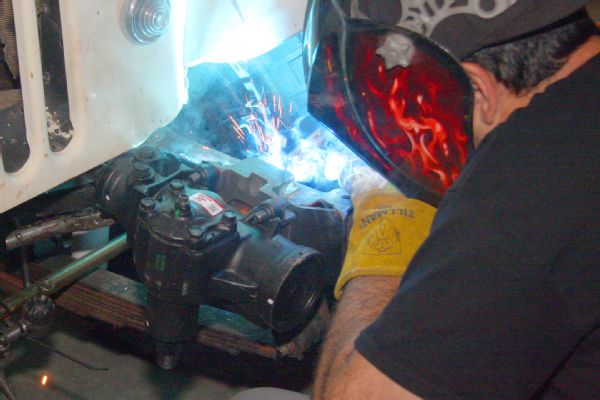
Tanner Lamb welded the added plates to the factory frame once the position and alignment was finalized. The ’70s Saginaw car steering boxes were available in several steering ratios. The one used here is a 3 1/2-turn version.
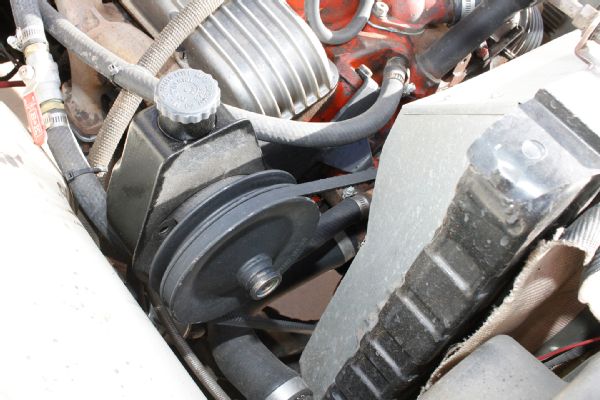
This CJ-5 has a small-block Chevy conversion engine that was installed nearly 50 years ago. Custom brackets were used to mount a GM power steering pump on the ’60s-era V-8, and power steering hoses were sourced for the box. Generally, one can use OEM pump brackets on common swap engines.
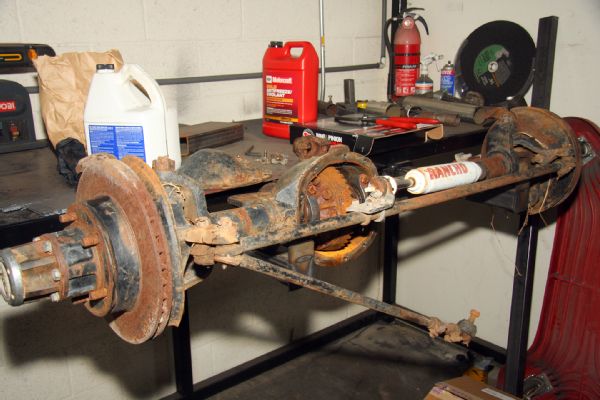
The other half of the project was to replace the front axle. A salvage axle was acquired from a post ’76 CJ-5. Disc brakes were used starting with ’76 models on some of these open-knuckle axles. The axle was stripped down for a check and rebuild. The Dana 30 axle is also 2 inches wider than the Dana 27 it was replacing.
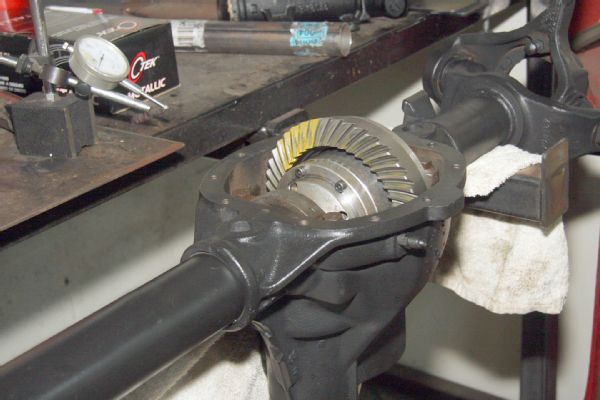
The axle was fully cleaned and blasted, then rebuilt with all-new bearings, 5.38 gears, and a Yukon Grizzly locker. The earlier Dana 27 and the Dana 30 both use 7 1/8-inch ring gears, but the Dana 30 ring uses two extra bolts.
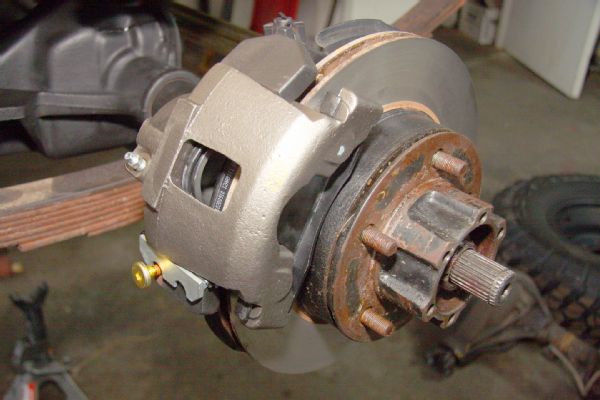
The newer axle gained the CJ disc brakes, and OEM rotors and calipers were used. These components all fit within 15-inch wheels, except some of the early stock steel wheels. OEM CJ-5 brake lines were used as well to keep things simple and replacement parts common. The stock brake master cylinder was retained and worked well.
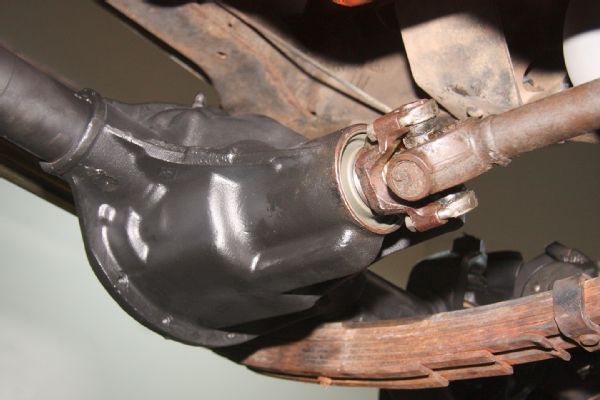
No modifications were needed to the front driveshaft due to the axle change. Both axles use 1310 U-joints, and the lengths of the differential housings are the same. The spring perch separation is also very close on the Dana 27 and 30 axles, so the springs bolt right up.
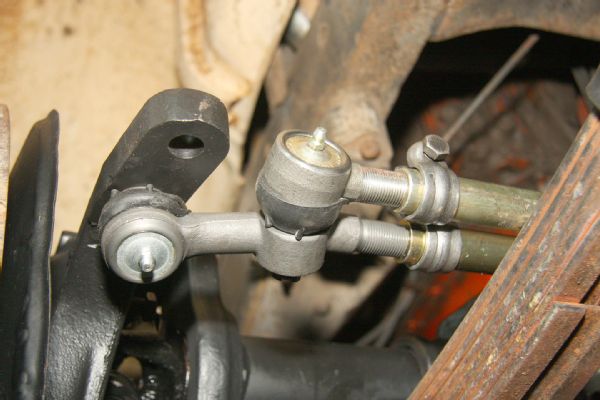
The Advance Adapters steering rods were combined with tie rod ends to complete the new steering linkage. The new setup is less complicated with fewer wear points to contribute to play in the system. Everything bolted right up the Dana 30 axle.